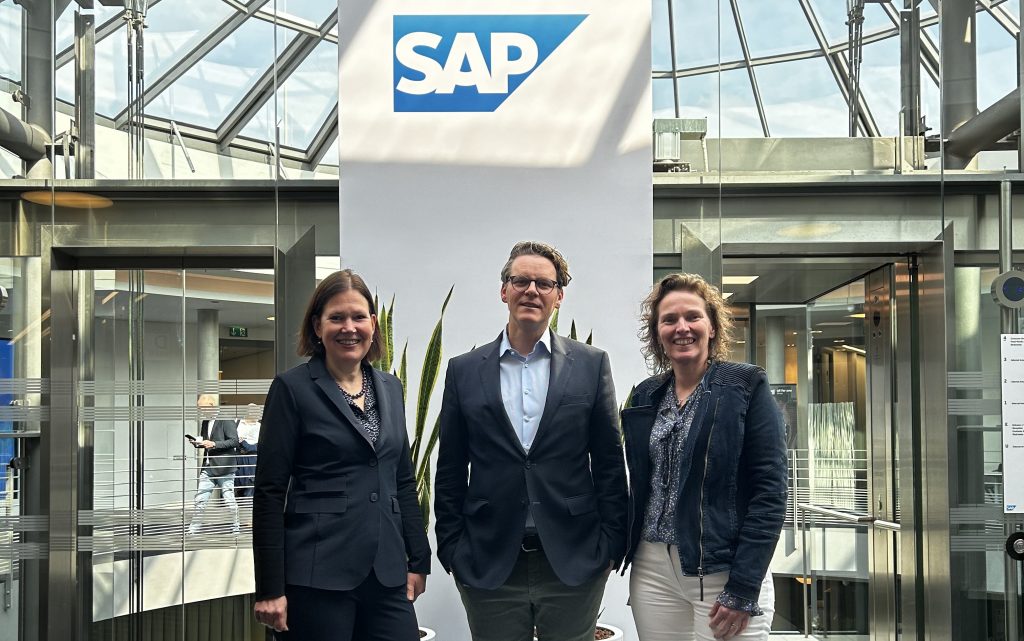With this came the decision to set up a new company code to separate ASICS Europe’s treasury activities from its commercial activities. Apart from the pros, it raised new challenges too.
ASICS stands for ‘Anima Sana In Corpore Sano’, loosely translated ‘a sound mind in a sound body’. This Japanese company was founded by Kihachiro Onitsuka in 1949. He felt that Japanese youth, who had lived through World War II, were in the process of being derailed and had too few pursuits. Onitsuka wanted to bring back the healthy life through sports, which demanded proper sportswear. And so, he decided to produce basketball shoes under the name Onitsuka Tiger.
Inventive like octopus
Onitsuka strived for perfection and innovation. One of the anecdotes about the origin of the ASICS basketball shoes is that he came up with an inventive idea when eating octopus salad from a bowl. During that diner, a leg of the animal stuck to the side of the bowl. When Onitsuka realized this was because of the animal’s suction cups, he decided to design basketball shoes with tiny suction cups on the sole for more grip. It turned out to be a revolutionary idea.
Another remarkable fact is that Nike-founder Phil Knight started his career at ASICS. When he visited the Onitsuka Tiger office in 1963, he was impressed by the inventive sports shoes and asked Onitsuka to become their sales agent in the US. After a few years working for ASICS Knight decided to start his own sports brand.
The tiger stripes go global
During the years after foundation, the range of sports activities provided by Onitsuka expanded to include a variety of Olympic styles used by athletes around the world. The current ASICS brand signature, the crossed stripes that appear on the side of all the shoes, was first introduced in 1966 during the pre-Olympic trials for the 1968 Summer Olympics in Mexico City. Martial arts star Bruce Lee was the first international celebrity to popularize this design. In 1977, Onitsuka Tiger merged with GTO and JELENK to form ASICS Corporation. Despite the name change, a vintage range of ASICS shoes is still produced and sold internationally under the Onitsuka Tiger label.
In 1977, ASICS opened a first small European office in Düsseldorf, in the home garage of a representative. This German city had a relatively large Japanese community and was centrally located in Europe. In 1995, ASICS Europe, Middle East and Africa (EMEA) relocated to a new headquarters in the Netherlands, from where more subsidiaries were established, and the ASICS network further expanded. The company built and rented several large distribution centers in Europe. In addition, the sales channels broadened from traditional wholesale to opening ASICS stores – first outlet stores, followed by a flagship store and e-commerce. Today, the brand sells all items through omnichannel.
The first implementation of the SAP system involved communication with the bank via the SWIFT platform.
Eugene Tjemkes, Head of Global Business Transformation Finance

Challenge
The implementation of SAP modules
In 2017, to further optimize their treasury function, ASICS Europe decided to implement the treasury management functionality of SAP. “That is when our cooperation with Zanders started”, says Eugene Tjemkes, Head of Global Business Transformation Finance. “The first implementation of the SAP system involved communication with the bank via the SWIFT platform, an in-house cash system with all kinds of automatic entries where Treasury acts as a payment factory – also on behalf of the subsidiaries.”
The Japanese headquarters opted for more or less the same treasury solution as those of the EMEA countries. “The other regions did not choose it, either because of their small size, or since they are single country regions (such as Australia) or because foreign currency plays a lesser role, such as in the US. In Europe, on the other hand, we are involved in currency transactions and hedging every day.”
Treasury as a separate company
Besides the SAP Treasury and Risk Management (TRM) module, ASICS Europe also implemented SAP Cash Management (CM), SAP In-House Cash (IHC) and the SAP Bank Communication Manager (BCM) in 2017. With this came the decision to set up a new company code that would separate the treasury functionality of ASICS Europe BV (AEB) from its commercial activities, as tax rules only allowed AEB to provide services and do business in Europe. In addition, the new company code, AEB Treasury, ensured global reach and provided cost savings and standardization due to the foreseen treasury activities in the EMEA region, Japan, and the Americas.
Tjemkes explains: “As a legal part of AEB, it was not possible for Treasury to do anything for ASICS US or ASICS Asia. Transforming our treasury functionality into a separate legal entity would make it possible to develop treasury activities outside the EMEA region too. Therefore, there were plans to separate the treasury functionality from the existing corporate structure and make it a global subsidiary of the Japanese headquarters. From that vision, that treasury functionality would be housed in a separate legal entity, we started implementing our treasury system in 2017. The system was set up accordingly; AEB Treasury became a separate company in SAP, although it was not a legally separated entity.”
Bringing back the treasury activities under AEB
However, the plan to service the company’s entities in other regions with an inhouse bank operating from Europe, did not go as planned. Instead, different regions of ASICS were supported with a local solution. And therefore, splitting into two company codes became irrelevant.
Tjemkes: “Due to the separated treasury functionality, the accounting department had to consolidate the reports to get them into one financial statement. After using SAP TRM, CM, IHC and BCM for a few years, we discovered that a legal entity administered in two different company codes appeared to be time-consuming while executing our day-to-day processes. Initially, the plan was to do this temporarily, with the idea that Treasury would become a separate entity. But unfortunately, the plan was ultimately not adopted by the head office – from their perspective the advantages were not that great.”
This left AEB with the artificial situation that there were still two company codes in which it had to deal with all kinds of currencies, with different balance sheet items, and problems with the redistribution results. “That finally made us decide to remove that artificial separation of company codes and bring the treasury activities back under AEB. That also meant an adjustment in our TMS. We asked Zanders to support us in that project.”
Solution
Streamlining Treasury Processes
To solve the shortcomings of the artificial separation, Zanders proposed various alternatives. After conducting a few workshops with the treasury department, it was decided to discontinue all the current processes (TRM, IHC, GL accounting) in the company code representing AEB Treasury and re-implement it in company code representing AEB. Hence, a single company code for the single legal entity.
Magda Bleker, Treasury Specialist at ASICS EMEA: “This would save us time on labor-intensive activities, such as replicating accounting entries into company code representing AEB. Further, as internal dealing only occurred between company codes representing AEB and AEB treasury, ASICS would no longer have to use the internal dealing functionality by merging the two company codes. Removal of these activities would make the processes more efficient.”
Zanders and ASICS identified that the proposed solution would require high implementation effort. It would also lose the flexibility to quickly split the TRM and IHC processes into a new legal entity. However, as the pros outweighed the cons, ASICS decided to go ahead with the merging of the two company codes. The project started with Zanders updating the decision forms, configuration, and master data conversion documents created in 2017 during the SAP TRM and IHC implementation project, which reflected the changes, risks, and implications of migration. After which, the new functionality was configured and tested in a development system, ensuring that it would not disrupt the treasurers’ daily activities and to keep the payment structure intact and valid. Once the configuration had been updated in the system, the previous configuration documents were also updated to reflect the new changes in the system.
This would save us time on labor-intensive activities, such as replicating accounting entries into company code representing AEB.
Magda Bleker, Treasury Specialist

Performance
Improving further
Tjemkes: “Around 2016, we implemented SAP Fashion management system (FMS) ourselves in our European offices as a pilot for the whole world. FMS is an industry-specific solution, and we were the first company to go live with it. In addition to Europe, our branches in the US, Canada, China and Australia, among others, are now on this platform. But to properly implement the treasury system we really needed a specialist. Zanders is a very professional service provider, who knows very well what modern treasury is and how treasury systems work. We couldn’t have done this without them. They did the project management for us, helped write the project plan and created a test plan.”
Despite the corona pandemic in 2020, ASICS had a turnover of 328,784 million yen, which is more than 2.5 billion euro. The company took a great deal to investigate their current processes and see what was working and what was not. Like in sports, ASICS showed how one can still move forward when taking a step back, improving their processes and making them more efficient.
Next step for AEB is to expand its functionality around hedging. “The hedge contracts are now recorded in the system. We want to further optimize the transparency and efficiency of the closing of our hedge deals with banks, to mitigate all associated risks. We also want to improve the valuation of the hedge contracts. There are functionalities in SAP that allow us to better value hedges. But we have already taken many, very important steps.”
















































